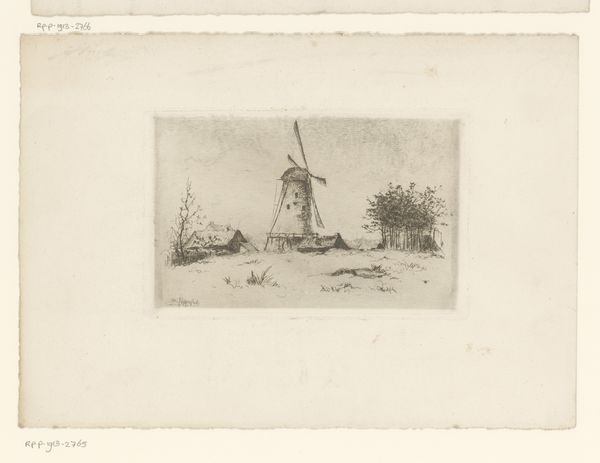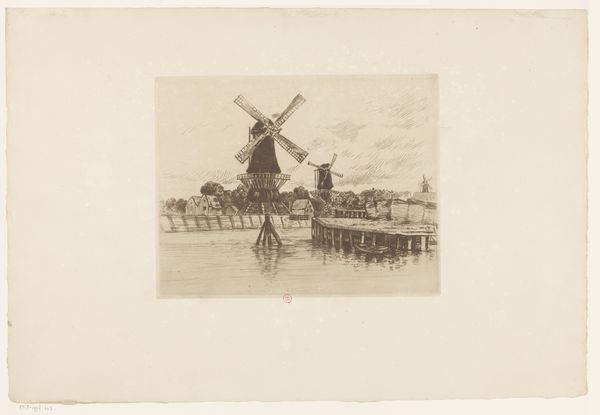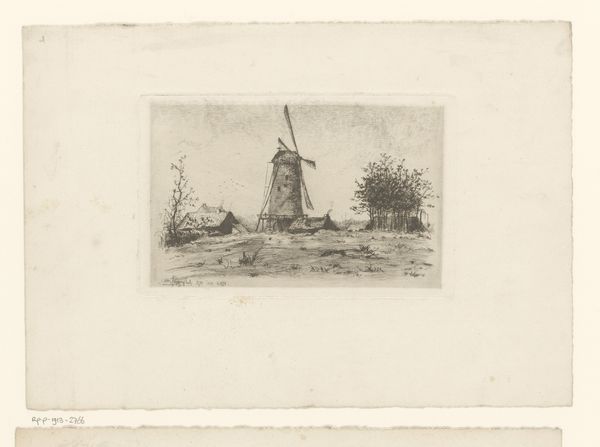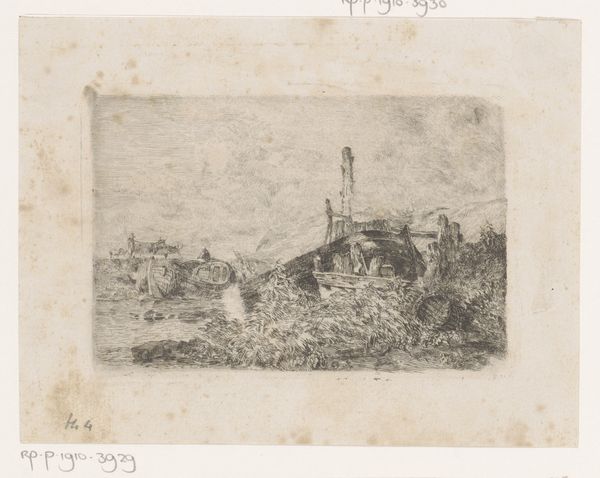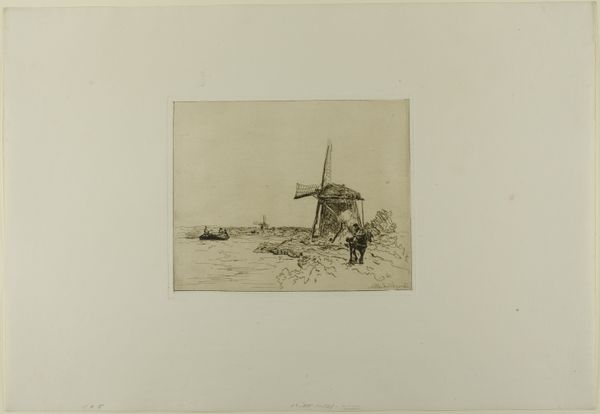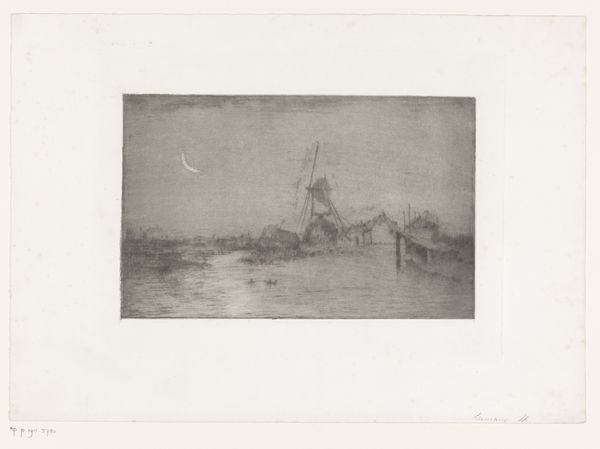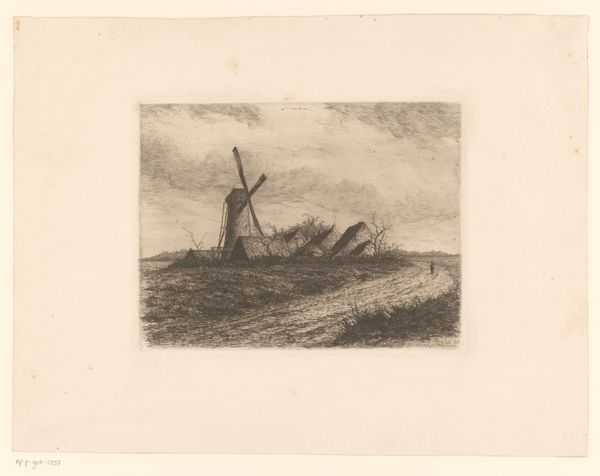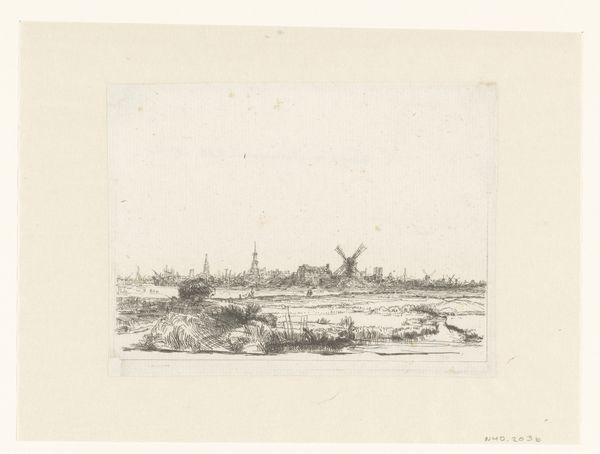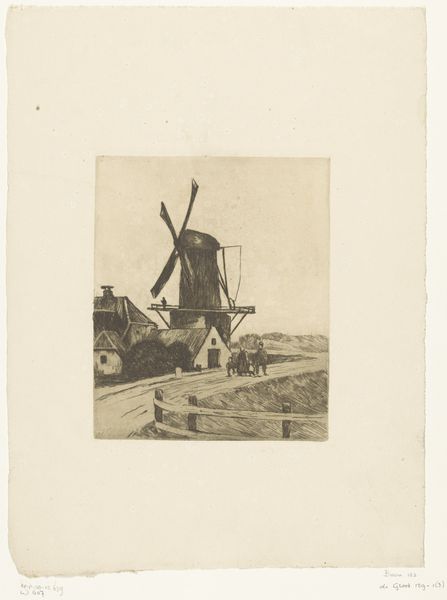
print, etching
#
dutch-golden-age
# print
#
etching
#
landscape
#
realism
Dimensions: height 100 mm, width 150 mm
Copyright: Rijks Museum: Open Domain
Curator: I'm drawn to the subdued serenity of this print. What do you think? Editor: There's something mournful about it, don’t you think? Stark, perhaps reflecting the difficult realities for rural communities in the late 19th century? Curator: We are observing “Gezicht op een dorp met molen”, or "View of a Village with Mill" by Omer Coppens. This etching, placing it in a fascinating period spanning 1874-1909, pulls from realism to show a quiet village scene. The print is primarily monochromatic, rendered with delicate lines. Editor: The dominance of the windmill evokes powerful symbols of industry and labour—its blades almost seem still against that blank sky. There’s this implied tension between tradition, represented by the windmill itself, and an encroaching, perhaps unwelcome, modernisation. Is it idealising a past or commenting on disruption? Curator: Windmills do often signal the connection between the Dutch and their landscape; the country depends so much on this infrastructure. And the image fits within the established visual vocabulary depicting the Netherlands, a type of cultural memory, wouldn’t you say? A source of pride but also anxiety. Editor: Exactly. Considering the historical backdrop – the rise of industrialisation and concurrent social reforms—I can't help but view Coppens' print as engaging with issues of identity. Curator: It’s true. But in doing so, there is a longing, even romanticising something. Even a melancholic reading resonates with a cultural moment steeped in notions of identity and progress, tradition and innovation. I notice even the etching medium itself suggests a reverence for the past. Editor: That makes sense, considering his lifespan encompassing the industrial revolution into modernity and how print media evolved in lockstep with the same period of profound social transformations. I now feel there's hope amidst the gloom; the very act of creating implies one. Curator: I'm pleased our talk illuminated how one visual artwork could speak of an artist, time, place and still speak to a global, twenty-first century viewer today. Editor: Agreed; art's ongoing dialogue keeps things relevant.
Comments
No comments
Be the first to comment and join the conversation on the ultimate creative platform.
